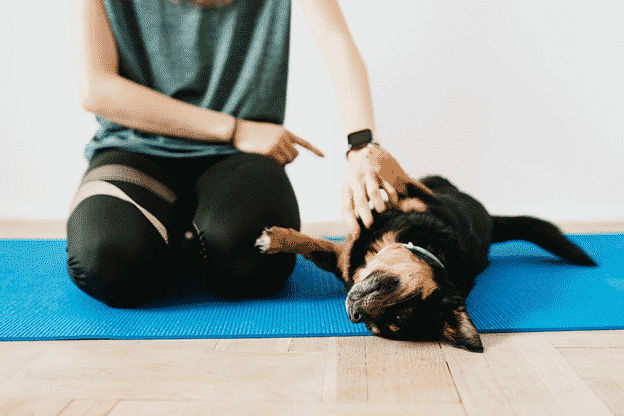

Housetraining Your Dog; The Ultimate Guide
Bringing a four-legged companion home is mostly exciting. House training a dog is crucial if you don’t want to walk into a cold, sticky puddle of urine every day. Now! we have established some important tricks of housetraining your dog.
Bringing a four-legged companion home is mostly exciting until you realize you have to potty train them. Teaching a dog to notify you or any other human nearby about its bowel movements is understandably tricky; after all, you are dealing with an animal here that functions on unfettered primal instants.
That said, house training a canine is crucial if you don’t want to walk into a cold, sticky puddle of urine every day. So while it’s a taxing task, you need to do it to keep your house clean and yourself sane; otherwise, sooner or later, you’ll be pulling your hair out!
Now that we have established the importance of potty-training let’s go over the process of housetraining your dog.
Acknowledge the Reality
Before we get into the nitty-gritty details of teaching a canine companion to tell the world about their bathroom urges, let’s get one thing straight; a dog is an ANIMAL.
How dare we, right? How could we say something so appalling about your ultra-intelligent fur child? But before you let your emotions get the best of you, hear us out.
Yes, dogs are intelligent beings, but at the end of the day, they are animals. They don’t understand social etiquette; they can’t because they are not wired to do so. Even when dogs are finally potty-trained, they don’t answer nature’s calls in the yard because they know it’s the decent thing to do. They do it because they have been taught that doing so will bring a reward.
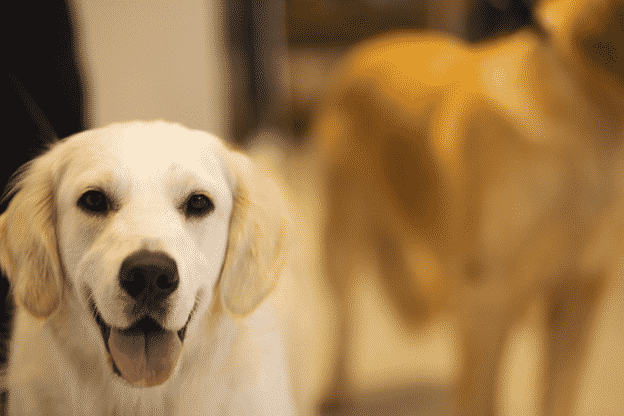
The point is that housetraining goes against everything the innately free-willed animal, aka a dog, knows/understands, which is doing absolutely anything at any time. Naturally, molding a being into something that’s a hundred and eight degrees opposite to their primitive identity will be an uphill battle, and understandably so!
So when you find yourself running out of patience because your furry pal is not cooperating, remember that you are asking something human of an inhuman character. Doing so will help you stay positive and consistent in your dog-potty-training endeavors.
With the basic facts out of the way, let’s look at the first step of housetraining a dog.
Understand the Inherent Canine Nature
Dogs do things or decide to do something for two reasons;
- Because it has a reward
- And it is safe- comfortable/not a trouble.
When your fuzzy child develops a habit, it’s mostly because they feel safe practicing said routine and because it offers them something in return. Let’s consider petting.
Your little one loves getting their belly rubbed when you are, let’s say, watching TV; they’ll make a habit of snuggling close to you during your TV sessions to get you to rub their tum-tum. Why? Because it’s safe to do so and because it brings them comfort/joy, aka a reward. This means if you want your fluffy child to go potty in the yard, you need to show them that doing so is safe and will pay well.
Long story short, incentivize the going-outside-to-potty shenanigan for your pup.
Communicate With Your Dog
Now you know that you need to offer a treat to your fur baby to potty-train them, but doing that is not as easy as you think. Don’t delude yourself by assuming that the first time your dog pees in the yard, you’ll give them a meaty morsel, and you all will live happily ever after without any bathroom accidents. No, that’s not going to happen, at least not so fast!
First, you need to contrive a scheme that encourages your pup to go outside for potty, and that cannot be kibbles. Dog treats can help you take your fuzzy little fellow out, but they cannot rewire their minds. In other words, they pee, and you give them a snack, then what happens? They don’t realize why they got the treat! In order for them to learn, they need to go out ceremoniously for peeing/defecating.
And here’s how you’ll do it.
The Two-Pronged Approach To Get Your Dog Out For Bathroom Business
When you are inside the home, keep your four-legged pal in places where they won’t relieve themselves.
Not sure what that means? Let us break it down for you.
Dogs tend to keep their safe places clean because those are for resting and having a good time. An owner’s lap and crates where a dog sleeps are no-pee/potty zones for canines as they don’t like to be near their waste.
When you are training your fur bud, keep them in their crate or on your lap to discourage them from relieving themselves inside. But that’s just the first step.
The next step is taking them out every few minutes (as per your potty timer, more on it later) with a tight leash on and staying in a designated potty zone in your yard for at least 10 minutes. While there, pretend you are not interested in your doggo but keep a peripheral watch.
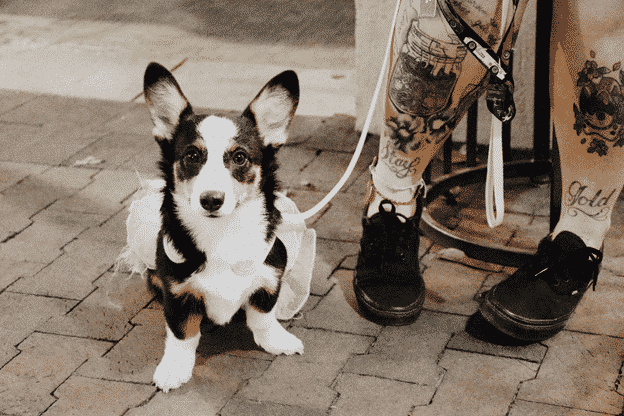
Hold on… Let’s address your queries.
Why do you need to keep a tight leash? And what’s this designated potty zone?
Firstly, you need to keep your little bud on a tight leash so that they don’t run off to play around in the yard and not pick up on the point of being outside. That said, you don’t need to be too tense with the leash because for some puppies, especially new rescues, that can be a traumatizing reminder of the past when they were scolded for going to the bathroom in front of others.
As sad as it sounds, many dogs are mistreated for urinating while on a leash next to their owner. To keep things simple, maintain a firm grip on your fur child’s leash so they cannot run off but also aren’t triggered/scared.
Secondly, keeping them in a confined area will help setting boundaries. That is, your canine pal will know that the potty zone is for a particular business and nothing else.
Moving on..
In sum, you are giving your fur child two options;
- They either violate their safe spots.
- Or use the otherwise pointless spot outside to pee/defecate, which they are taken to every few minutes.
And that’s how you steer them outside the house for their bathroom business. Now comes the part where you use kibbles to treat your dog.
Yummy Treats on the Nameless Site
You have been taking your canine companion out multiple times a day to a location they don’t quite understand the point of, but sometimes they end up receiving treats there. That’s when your little pooch begins to wonder, “What’s the connection between me occasionally getting tasty nibbles and the strange place I visit daily where suddenly mom/dad becomes super boring and uninterested in me?”
Once your intelligent fur friend begins connecting the dots, they’ll soon start to piece everything together. But you need to be careful about handing out the treats after a successful bathroom trip. Give your sweet pal a bite while they are relieving themselves; you’ll confuse them, give it a minute or two after they are done with their business, you confuse them again.
The moment you see your fluffy kid changing position, know that it’s your cue to stuff their face with tasty treats.
If you wait too long to give kibbles, they will forget that they just peed/pottied, and if you do it too soon, they’ll not understand the point at all.
In short, your timing needs to be impeccable!
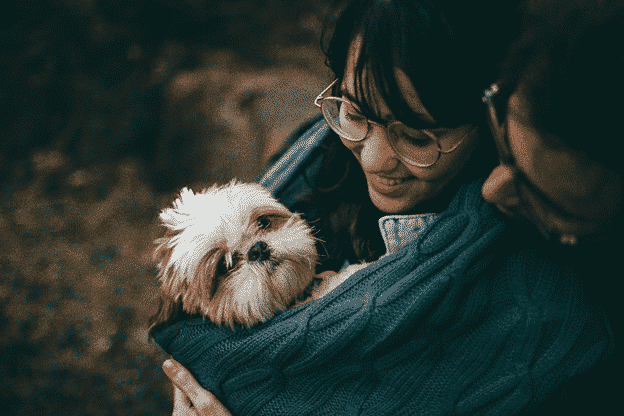
You can also change rewards as you see fit. Some days you can let your little one run freely in the backyard while on others give them a delightful morsel to eat. You can also shower them with love and kisses to encourage them.
Everything else makes sense so far, but keeping your dog in confined spaces or on your lap seems a bit much, right? Of course, it does! You can’t hold your fur child for every minute you are inside the house. So what do you do? Use a timer
Use a Potty Timer
A potty timer is an excellent method to keep track of a dog’s bowel movements.
But how does it work?
You set the timer for every bathroom trip, depending on your dog’s age and eating habits. Typically, with puppies, the 10-10 minute rule works best.
Since puppies do not have control over their bladders when they are little, they must be taken out regularly; hence the 10-10 minute rule. What you have to do is set up your timer for every 10 minutes as the day begins.
After the first alarm goes off, take your fur child to the potty zone and keep them there for 10 minutes. If they happen to relieve themselves in those ten minutes, cheer them on, and reward them. But if that doesn’t happen, come back in and wait for ten minutes before going back out for the next run. And for the 10 minutes that you’re inside, keep a strict watch over your fuzzy friend’s movements; ideally, put them in their crate or sit them down on your lap.
This seems like an exhausting routine, and it indeed is, but things get easier after a few days. However, you need to stay consistent; otherwise, there’s no point in your inconsistent, random bathroom trips.
Once your dog gains control over its bladder, you can stretch the interval durations little by little. But keep your little one’s age in mind when setting the time.
Don’t give up after a few unsuccessful trips.
Every time you and your four-legged buddy come back after an unsuccessful bathroom parade, your desire to let them be will be overpowering. But no matter how all-consuming your wish to get a breather gets, try to stay on track.
And don’t think that looking away for a minute will not make much difference because it will! One minute, even one second, is enough for a canine to empty a full bladder. So, if you look away, all your efforts to housetrain your dog will go to waste, and you’ll have to start over. Your two seconds of respite can cost you three days of going back and forth to your pup’s potty spot every ten minutes or so.
Setting Intervals
How long should you wait before taking your fur bud out for potty? It depends on their age.
Here is a rundown to give you an idea about a dog’s age and potty intervals
- Less than 8 weeks: An 8-week old or younger puppy is too young to be able to hold the pee in. If your bud falls in the said age-bracket, take them out for potty every 30 to 45 minutes once you have passed the 10-10 minute stage.
- 8-10 weeks: Though your fur child still doesn’t have full control over their bladder, it’s a little more dependable now. This means you can wait up to 45 minutes to an hour before taking them to their bathroom in the yard.
- 10-12 weeks: During weeks 10 and 12, you can stretch the time interval up to 90 minutes.
- 12+ weeks: Take your bud out for potty every 120 minutes or so during waking hours.
- Overnight: Take them to potty every 3-4 hours overnight or during crated periods.
If you follow the potty timer religiously for two weeks, your dog will most likely come out well-trained. But if you slack off for even a second, rest assured you will have to start over and clean the mess in your living room.
Now that we have covered most of housetraining your dog ground, and discussed what needs to be done, let’s see what not needs to be done!
Don’t Lose Your Cool
When dogs lose control over their unreliable bladders in places they absolutely shouldn’t; even the most devout and nurturing paw-parents also lose their calm. While understandable, getting worked up over your dog’s bathroom accidents isn’t going to get you anywhere.
You walk in on your little pal mid-pee, and all you want to do is scream at them at the top of your lungs for ruining your limited edition Persian rug, but that’s the last thing you should do!
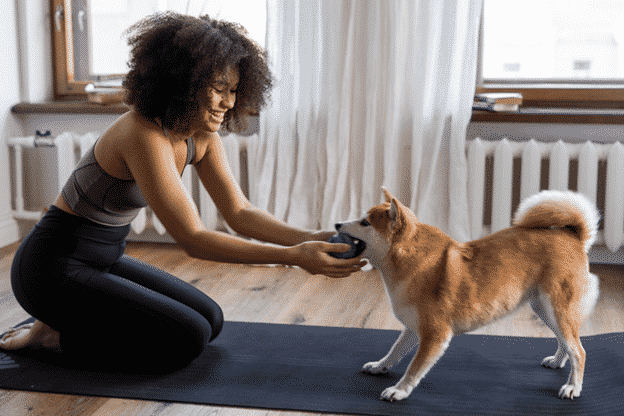
Shouting, punishing, or any other impulsive reaction is not going to make a difference for various reasons. Firstly, if you are late in giving your canine companion a piece of your mind, they won’t know what they did to deserve your wrath. Puppies forget things quickly, so they don’t usually remember peeing after it’s done, unless they are immediately rewarded.
Secondly, if you catch your bud mid-way, your harsh response will scare them, and they’ll begin to look for places to relieve themselves where you cannot walk in, such as under the bed. The only way you’ll know something ungodly happened under your bed once the stench has gotten too much to go unnoticed. You don’t want to scare your furry child for something so entirely natural!
Lead the Way
When you catch your little ball of fur in the act of relieving themselves, instead of going off like a ticking bomb, use a steady tone and lead them to the potty zone.
Some dog parents can be quite unlucky because their persistent efforts fail to produce results, and they continue to step into yucky puddles of urine. If you are one such paw-parent, practice staying calm and guide your fuzzy kid to the designated potty place. Use treats to lead the way if need be. Eventually, your dog will learn to go out to potty.
Don’t Use Pee Pads in Multiple Spots Around the House.
Pee pads are a godsend for dog parents, but you need to be frugal with their usage. You can’t (shouldn’t) place pee pads in too many spots because that will confuse your little bud.
Only put soaking mats in places where your four-legged companion is most likely to relieve themselves inside the house. And when you catch them using the pad, stop them and guide them to the marked potty location.
Why?
Because you cannot let your little best friend off the hook any time, they go to the bathroom inside the house, even if it’s on a swab meant to soak pee. If you do that, you’ll confuse them and make them feel that it’s okay to do bathroom business indoors.
Dogs don’t do well with mixed signals; they are creatures of consistency and routine. If you have them follow one pattern and then break it yourself, you’ll fluster them beyond belief.
Therefore, regardless of where your fluffy pal relieves themselves inside the house, you have to stop them in a calm voice and lead them out.
A Short Summary
A quick recap of the things we have established so far
- Housetraining your dog is challenging and time-consuming because you are teaching an animal to do something against its nature.
- You need to plot a scenario that leaves two options for your dog; desecrating their safe spots or utilizing the potty zone. Doing so will create a routine/a regular practice for your dog to follow.
- Use a potty timer
- Set a reward for your pup
- Don’t yell at your fur baby when you catch them in the act. Also, avoid punishing them.
- When you find them relieving themselves inside the house, guide them to the designated potty zone.
Ending Note
Housetraining your dog will certainly drive you up the wall, but you need to remember that you are essentially going against the natural order of things. So, this process is going to take time. Besides, you are the one who decided to become a paw-parent and brought your fur firstborn home. Now you need to love them and care for them wholeheartedly!
Discover how to create a joyful, healthy home for your pet.
Subscribe to your weekly rundown of practice, real life ideas and training tips straight to your inbox.


